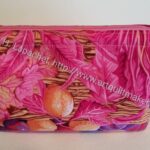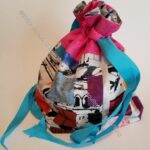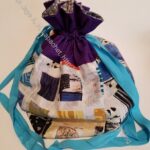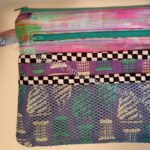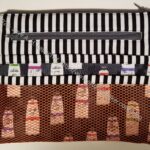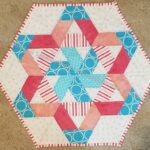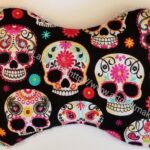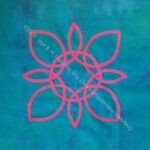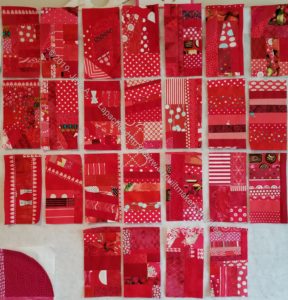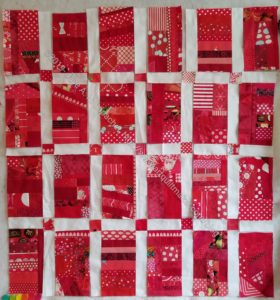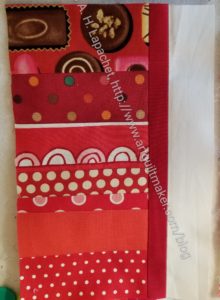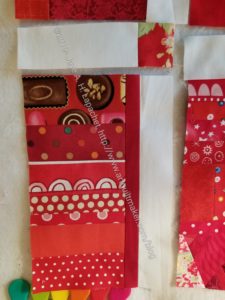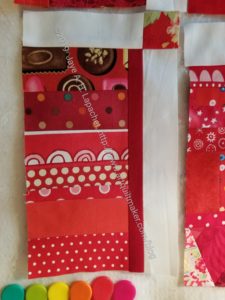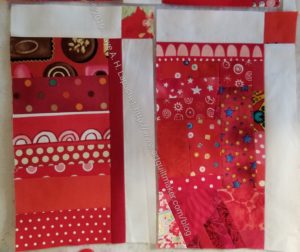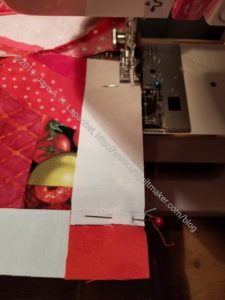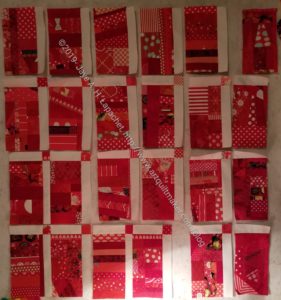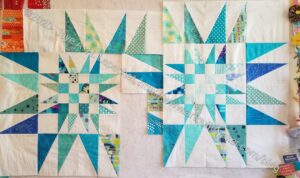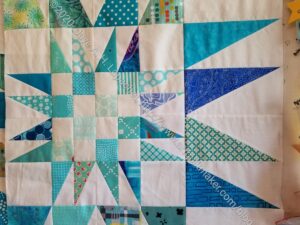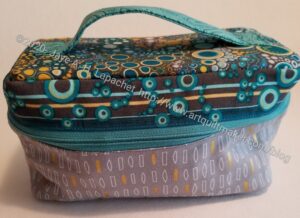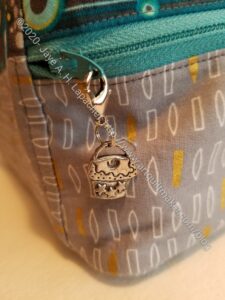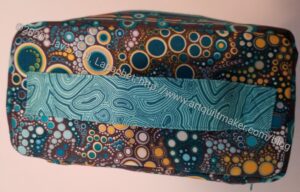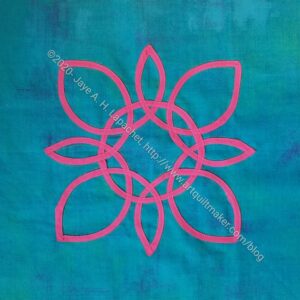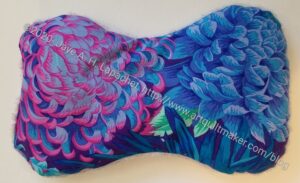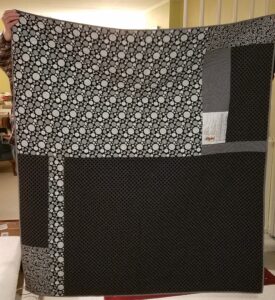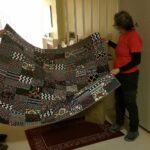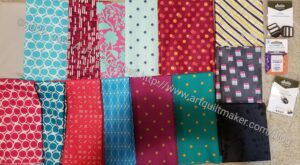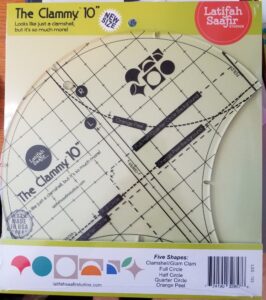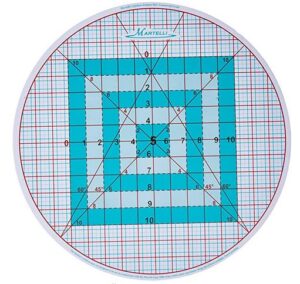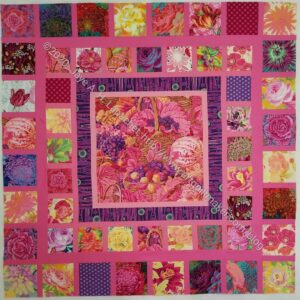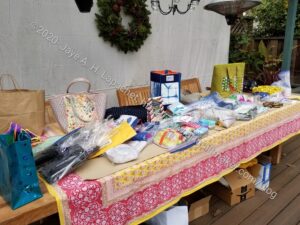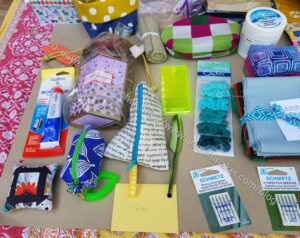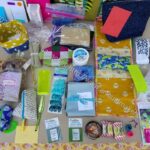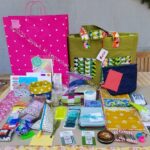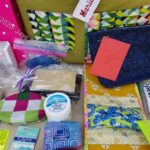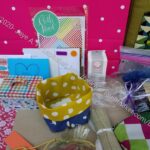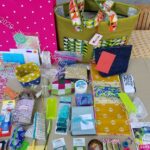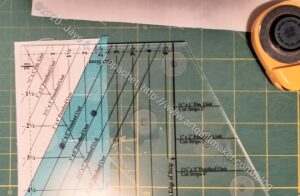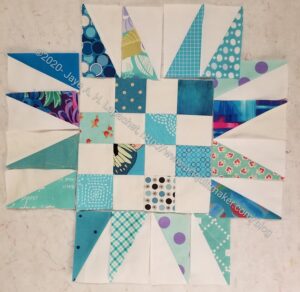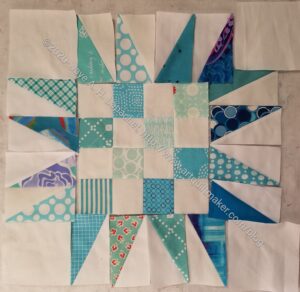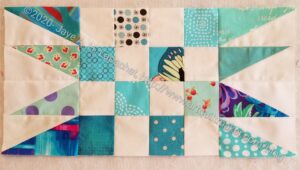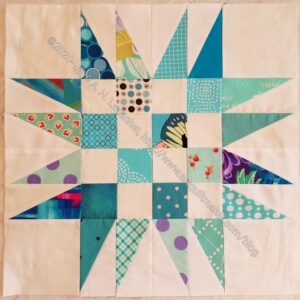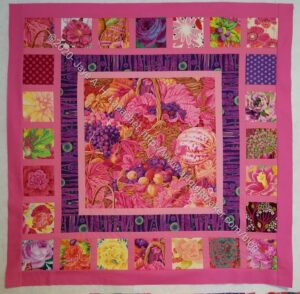Here we are with an almost clean slate. I hope 2021 is going well for you so far.
I decided that I was not going to work specifically on my UFO list this year. I decided I was going to make projects that I have been wanting to make. Some of these I wasn’t making because of the UFO list. I still want to finish the quilts on the UFO list, but I want to give myself a break and try not to feel stressed about the UFOs. I made a lot of progress last year and I am going to rest on my laurels a little bit and make some quilts for which I have the supplies, like the Pink Kaffe quilt.
I updated the Color Improv donation quilt page.
Finished 2021 Quilt Projects
- Red Scribbles – finished January 2021
Finished 2021 Small and Non-Quilt Projects
This category covers bags, toys, aprons and knitting as well as other non-quilt projects.
- Altoid Tin Sewing Kits
- Bias Tape block
- Drawstring Bags
- Eye Masks
- Philip Jacobs Flower Eye Mask
- Paint Tube Eye Mask
- Dia de los Muertos Eye Mask
- Gazebo Table Topper
- Retreat Pouch – finished January 2021
- Sotak Purse Organizer gift #1 – finished January 2021
- Sotak Purse Organizer gift #2 – finished January 2021
Doing Good
Nothing so far
In Process or To Make
The ‘In Process’ is used to denote projects on which I am actively working or are on the design wall waiting for me to stitch. I am continuing to try not to put away projects. I find putting a project away ensures I never work on them, because I just lose steam.
Quilts
- Pink Kaffe Quilt – top is done, binding is partially made and I need to make the back
Small Projects to Make or in Process
Most of my progress involves thinking or just cutting.
- One Hour Basket for organizing my decks of cards – Creative Strength, mindfulness, etc. I may switch to one of the Minikins or a Catch All Caddy projects for this purpose.
- One Hour Basket for my stuff that tends to accumulate on the dining room table. I may switch to one of the Minikins projects or a Catch All Caddy for this purpose.
- One Hour Basket for DH’s stuff that tends to accumulate on the dining room table. I may switch to one of the Minikins projects for this purpose.
- Retreat Organizer – another project from the Crafty Gemini Organizer Club, also on my list, but not yet started
- Superbloom tote gift – it is all cut out and I just need to take the time to sew it together.
- Ultimate Project Organizer – another project from the Crafty Gemini Organizer Club, also on my list, but not yet started
- Officer gifts for January 2021 – working on the project and nearing completion
- Ultimate Carry All Bag – Bag-a-Long for BAM – I have the inside pockets made and am struggling with the front pocket. I really need to get busy on this
- Westchester shirt – this is a Crafty Gemini pattern. I bought the fabric at PIQF in 2018. I started working on the pattern, then needed help from Mary. She gave me some advice and I need to get back to it.
Handwork
I decided that some of my projects are in a different class because they are hand piecing or embroidery or beading. They take longer. Thus I created a new category and have moved some projects here.
- English Paper Piecing Project– half hexies – I haven’t been working on this since shelter-in-place started.
Ready for Quilting
FOTY 2019 – ready to take to the longarmer
In the Quilting Process
- BAMQG Improv Round Robin
- The Tarts come to Tea
In the Finishing Process
- Nothing so far
Still WIPs
I still have WIPs. Who doesn’t, after all? A project in the ‘UFO’ category means I am stalled. A nicer way of saying UFO is a WIP. The list is a lot shorter and the projects are newer, for the most part.
- Handbag Sampler – this is still the forgotten project. It should be on the UFO list. The blocks were teaching samples when I taught a sampler class some time before I started writing the quilt class sampler tutorials. I found one block recently, but otherwise I actually don’t know exactly where the blocks are hiding. I crawled up in the far reaches of my fabric closet to see if I could find them and they weren’t where I thought. I am sort of mystified as to where they could be. I haven’t even found a picture of all the blocks. Sad.
- Lobster – I think I might make this into a tablerunner for the buffet. I think that will be a good and fun use of the piece even if the colors aren’t quite right for the dining room.
- Pies and Points from 2016 Victoria Findlay Wolfe class. The last time I worked on it was when Julie and I had a playdate in April 2018. I brought this piece with me so I could cut more elements (Julie has a Sizzix). I lost my excitement about this piece shortly thereafter and still have to get it back. Thus, I had to move this to the WIPs area.
- Pointillist Palette #4: Fourth is a series of 6 quilts; needs tiny square patches sewn together. No progress.
- Self Portrait: started in 2006 at a class at Quilting Adventures in Richmond, Virginia. I am still stalled on this again. As one of my oldest (I am pretty sure) UFO, I put it on my blog and out into the Twitterverse and Diane suggested that I not consider this as a self portrait. I think that strategy is a great idea. I am now trying to think of a new persona for her.
- Serendipity Lady – I am still planning to take this piece to be framed.
- Who Am I? – This piece is still languishing. Perhaps having a larger design wall will help me regain momentum. The amount of satin stitching I was facing was a problem until I thought of BIAS TAPE. I am going to make the words with bias tape, perhaps different widths, then I won’t have to sew the satin stitching. Red Scribbles and Friend Julie helped me come up with this solution. Now I just have to do it!
